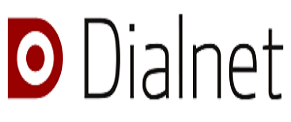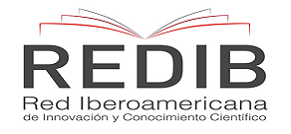Functional exercise program to decrease overweight in housewives
Keywords:
Housewives, Functional Exercises, Overweight, Obesity, Mammoth Hunters ApplicationAbstract
Physical activity has gained significant popularity these days, and thousands of people around the world are flocking to gyms to exercise, maintain good health, and improve their personal appearance. Perhaps those at a disadvantage are housewives, who have limited time due to their daily activities at home. The need arises, then, to establish the first objective of structuring a functional exercise program that can be implemented at home and contributes to weight loss, regulating overweight, and preventing obesity. Functional exercises are versatile and very simple, and can be performed at home since they do not require a large number of implements or tools. Through exploratory research, we were able to discover the Mammoth Hunters app, which is a great alternative for housewives to exercise and avoid health complications. The instructors of this methodology are highly qualified fitness professionals who know how to guide the implementation of the exercises, and their recommendations are also aimed at boosting the self-esteem and motivation of housewives.
Downloads
References
Avila, C. (2022). ¿Los quehaceres domésticos cuentan como actividad física? Obtenido de https://www.intramed.net/contenidover.asp?contenidoid=99769#:~:text=%22Las%20tareas%20dom%C3%A9sticas%20son%20una,para%20la%20actividad%20f%C3%ADsica%20recreativa.
Barberán, K., Escala Cornejo, R., & Valle, S. S. (2011). Sobrepeso y Obesidad como factorespredisponentes de hipertensión arterial. La Revista Medicina, 16(3), 160-168.
Bouchard, C. (2013). Actividad física y obesidad. Manole.
Calero, S., Maldonado, I., Lorenzo, A., Rodríguez, A., & Otáñez, N. (2016). Actividades físico-recreativas para disminuir la obesidad. Revista cubana de investigación Biomédicas, 35(4), 375-386.
Casarin, S., Porto, A., & Gabatz, R. (2020). Tipos de revisión de literatura: consideraciones de las editoriales del Jornal de enfermeras y Salud. Jornal de enfermeras y Salud, 10(5), 1-7.
CDC. (2022). Actividad física para un peso saludable. Obtenido de https://www.cdc.gov/healthyweight/spanish/physicalactivity/index.html.
Donato, A. (2017). Anorexia, Bulimia y Obesidad. 2da. Edición. Barueri.
García Chamizo, E., & González Santisteban, M. del C. (2021). Efecto de un programa de ejercicios en pacientes sobrepeso y obesas del sexo femenino. Revista Cubana De Medicina Del Deporte Y La Cultura Física, 15(3), 1-14.
González, J. (2016). Enfoque poblacional del tratamiento de la obesidad. Pontificia Universidad Católica de Chile. Recuperado el 19 de mayo de 2025, de https://medicina.uc.cl/publicacion/enfoque-poblacional-del-tratamiento-de-la-obesidad/
Haltom, R. (2019). Circuit weight training and its effects on excess postexercise oxygen consumption. Medicine & Science in Sport & Exercise, 31(11), 1613 - 1618.
Hunter, O. (2023, 31 de agosto). Rutina de ejercicios en casa: Cómo crear tu entrenamiento óptimo. MHunters. https://mhunters.com/es/blog/rutina-de-ejercicios-en-casa-como-armar-mi-rutina/
Jaramillo-Jaramillo, Laura Isabel, Martínez-Sánchez, Lina María, & Ospina-Sánchez, Juan Pablo. (2017). Contexto clínico y genético de la obesidad: un complejo mundo por dilucidar. Anales de la Facultad de Medicina, 78(1), 67-72.
LBDC. (2019). Entrenamiento funcional, qué es, beneficios y rutina con ejercicios. Obtenido de https://rehabilitacion-fisioterapia.sanitas.es/centros-rehabilitacion/castellana/actualidad/entrenamiento-funcional/index.html#:~:text=Los%20ejercicios%20de%20entrenamiento%20funcional,la%20pr%C3%A1ctica%20de%20cualquier%20deporte
Mcardle, W., Katch, F., & V., K. (2018). Fisiologia del ejercicio - energía, nutrición y desempeño humano. Koogan S.A.
Nodal, J. (2011). Plan de ejercicios físicos para mujeres mayores de 30 años con obesidad de la parroquia corazón de Jesús del sector la carolina del municipio Barinas. Educación Física y Deportes, Revista Digital. Buenos Aires, 16(161), 1-5.
Oliveira, D., Mesquita, M., Azevedo, N., & Rocha, A. (2018). Una propuesta válida para el entrenamiento en la obesidad. Educacion.
OMC. (2008). Las amas de casa propensas a desarrollar obesidad.
ONU. (2023). Panorama regional de la seguridad alimenaria y nutiriconal en América Latina y el Caribe. Obtenido de https://iris.paho.org/handle/10665.2/57048.
Oramas, G. &., & Goicochea , O. (2011). Actividades físicas para fortalecer la salud de las amas de casa. Revista Digital, 16(157), 1-12.
Organización de las Naciones Unidas para la alimentación y la agricultura. (16 de 10 de 2019). FAO en Ecuador. Obtenido de El hambre y la obesidad coexisten en Ecuador: https://www.fao.org/ecuador/noticias/detail-events/es/c/1238711/
Programa Mundial de Alimentos. (2019). Obtenido de Reporte Anual 2019: https://docs.wfp.org/api/documents/WFP-0000117491/download/?_ga=2.99993758.1640616691.1679417403-1748826900.1679417403
Rubio del Peral, J. A., & Gracia Josa, M. S. (2018). Ejercicios de resistencia en el tratamiento y prevención de la sarcopenia en ancianos: Revisión sistemática. Gerokomos, 29(3), 133–137. https://doi.org/10.4321/S1134-928X2018000300005
Villarreal, A., Sandoval, J., & León, G. (Enero– diciembre 2019). Riesgo metabólico en adultos jóvenes delas parroquias El Chical, Maldonado y Tobar Donoso del cantón Tulcán. Horizontes de Enfermería, 4(9), 68-78. https://doi.org/10.32645/13906984.834
Downloads
Published
How to Cite
Issue
Section
License
Copyright and Licensing
For all articles published in Atena Journals, copyright is retained by the authors. Articles are licensed under an open access Creative Commons CC BY 4.0 license, meaning that anyone may download and read the paper for free. In addition, the article may be reused and quoted provided that the original published version is cited. These conditions allow for maximum use and exposure of the work, while ensuring that the authors receive proper credit.
Reproducing Published Material from other Publishers
It is absolutely essential that authors obtain permission to reproduce any published material (figures, schemes, tables or any extract of a text) which does not fall into the public domain, or for which they do not hold the copyright. Permission should be requested by the authors from the copyrightholder (usually the Publisher, please refer to the imprint of the individual publications to identify the copyrightholder).
Permission is required for:
- Your own works published by other Publishers and for which you did not retain copyright.
- Substantial extracts from anyones' works or a series of works.
- Use of Tables, Graphs, Charts, Schemes and Artworks if they are unaltered or slightly modified.
- Photographs for which you do not hold copyright.
Permission is not required for:
- Reconstruction of your own table with data already published elsewhere. Please notice that in this case you must cite the source of the data in the form of either "Data from..." or "Adapted from...".
- Reasonably short quotes are considered fair use and therefore do not require permission.
- Graphs, Charts, Schemes and Artworks that are completely redrawn by the authors and significantly changed beyond recognition do not require permission.
Obtaining Permission
In order to avoid unnecessary delays in the publication process, you should start obtaining permissions as early as possible. If in any doubt about the copyright, apply for permission. Atena Journals cannot publish material from other publications without permission.
The copyright holder may give you instructions on the form of acknowledgement to be followed; otherwise follow the style: "Reproduced with permission from [author], [book/journal title]; published by [publisher], [year].' at the end of the caption of the Table, Figure or Scheme.














